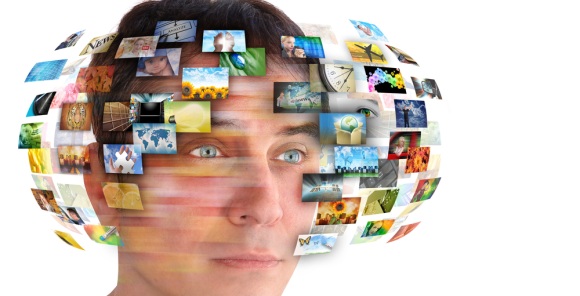Here at Mindjet, we think visualising information rocks — but more importantly, there’s a whole load of scientific proof as to why people find it so much easier to digest and work with information that’s displayed visually, rather than in traditional formats such as documents and spreadsheets. I’ve scoured the Web to find you these 10 great reasons to hop on the information visualisation train.
1. 93% of communication is non-verbal.
Or at least that’s what top psychologist Albert Mehrabian says, who argues in his Silent Messages research that the non-verbal elements of communication are particularly important for expressing feelings and attitude. It seems people tend to pay more attention to and trust the tone of a voice and visual cues, rather than the actual words being spoken.
2. Almost 50% of your brain is focused on visual processing.
And that’s according to research by David Van Essen. That’s a large part of your brain power going towards extracting information about the world with your eyes.
3. 70% of all your sensory receptors are in your eyes.
Sensory receptors are the nerves which respond to a stimulus in your internal or external environment. The fact that so many of these receptors are in our eyes makes it clear why we find it so much easier to absorb information visually.
4. We can get the sense of a visual scene in less than 1/10 of a second.
…which is pretty fast. Much faster than it takes me to read, digest and understand a paragraph of writing.
5. Researchers found that colour visuals increase the willingness to read by 80%.
By using engaging and appropriate colours in your visualisations and infographics, people are much more likely to read them. This is something that you just can’t do with any real impact in a written document or spreadsheet.
6. People better understand medicine labels when they have text AND pictures.
A study found that participants were 95% better able to understand complex medical information when both text and pictures were used on the labeling, as opposed to those with just text. This shows just how useful visualisation is when it comes to getting people to understand complex information.
7. People following directions with text and illustrations do 323% better than people following directions without illustrations.
W. Howard Levie and Richard Lentz reviewed the results of 55 experiments and found this to be true. It’s no wonder that countries all around the world use simple images on sign posts to help motorists find their way.
8. If information is displayed visually, individuals are 17% more productive and need to use 20% less mental resources.
Our own scientific study, carried out by Mindlab International at The Sussex Innovation Centre, compared how office workers manage data with both traditional and visual software. As we suspected, integrating visualisation into the way we manage and process information increases how efficient we are.
9. Teams collaborating on a project use 10% less mental resources and are a whole 8% more productive when using visualisation tools.
Not just as individuals, but also as teams! You can read about it in more detail here.
10. “A picture is worth ten thousand words.” Washington Post, July 26, 1925.
Ah yes. That infamous adage sums it all up nicely, doesn’t it?

